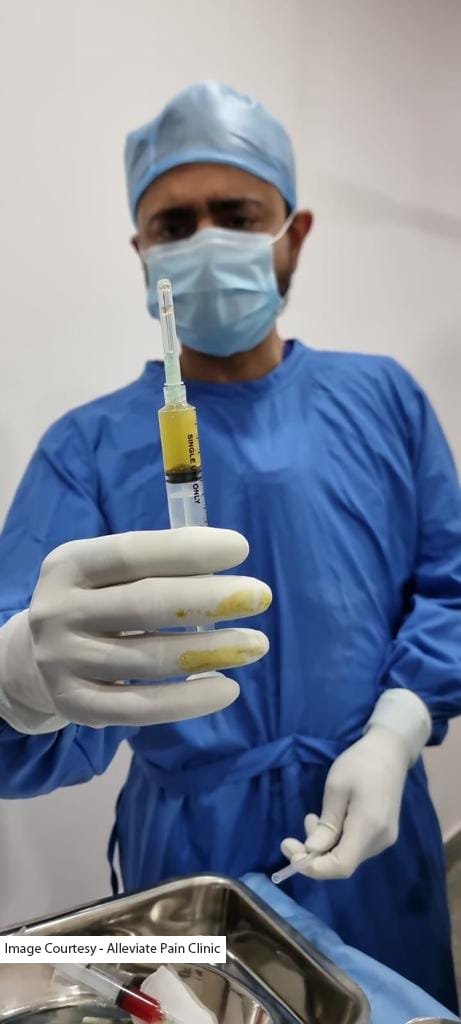

Introduction
Low back pain is a common ailment affecting millions of people worldwide, leading to decreased quality of life and productivity. While conventional treatments such as medication, physical therapy, and surgery can provide relief for some individuals, others seek alternative therapies like Platelet-Rich Plasma (PRP) injections. In this blog, we delve into the effectiveness of PRP therapy for low back pain, exploring its mechanisms, potential benefits, and considerations for those considering this treatment option.


Understanding Platelet-Rich Plasma (PRP)
Platelet-Rich Plasma (PRP) therapy involves the injection of a concentrated form of the patient’s own blood plasma, enriched with a higher concentration of platelets than normal. Platelets contain growth factors and other bioactive proteins that play crucial roles in tissue repair, regeneration, and inflammation modulation. By delivering a concentrated dose of these healing factors to the site of injury or pain, PRP therapy aims to stimulate natural healing processes and alleviate symptoms.
The Mechanism of PRP for Low Back Pain: In the context of low back pain, PRP injections are believed to exert their effects through several mechanisms:
Anti-Inflammatory Properties: Platelets release anti-inflammatory cytokines and growth factors that help reduce inflammation in the affected area of the spine, potentially alleviating pain associated with inflammatory conditions.
Tissue Regeneration: Growth factors present in PRP promote the regeneration and repair of damaged tissues, including intervertebral discs, facet joints, and ligaments, which may contribute to pain relief and improved function.
Pain Modulation: PRP therapy may help modulate pain perception by influencing the activity of nociceptive (pain-sensing) nerves and altering the biochemical environment of the spine.
Enhanced Healing: By accelerating the body’s natural healing processes, PRP injections may facilitate faster recovery from underlying musculoskeletal injuries or degenerative changes contributing to low back pain.
Evidence for the Efficacy of PRP Therapy
While PRP therapy holds promise as a potential treatment for low back pain, the scientific evidence supporting its effectiveness is still evolving. Several studies and clinical trials have investigated the use of PRP injections for various spinal conditions, including degenerative disc disease, facet joint arthritis, and sacroiliac joint dysfunction. Many of these studies have reported promising outcomes.
Considerations and Caveats
Before undergoing PRP therapy for low back pain, individuals should consider the following factors
Patient Selection: PRP therapy may be more effective for certain types of low back pain, such as those caused by soft tissue injuries or inflammatory conditions, than for others. A thorough evaluation by a qualified healthcare provider can help determine whether PRP is a suitable treatment option.
Treatment Protocol: The optimal dosage, frequency, and timing of PRP injections for low back pain are still subject to debate. Individualized treatment plans tailored to the patient’s specific condition and response to therapy are essential for maximizing the potential benefits of PRP.
Cost and Accessibility: PRP therapy may not be covered by insurance and can be costly, requiring multiple injections over time. Patients should weigh the potential benefits against the financial implications and consider alternative treatment options.
SUCCESS AT ALLEVIATE
Through our integrated approach, Alleviate Pain Clinic has successfully treated thousands of patients suffering from low back pain. By combining evidence-based precise image guided interventions with individualized care, we strive to achieve meaningful improvements in pain relief, function, and quality of life for our patients. Alleviate Pain Clinic’s multidisciplinary approach offers patients a comprehensive and personalized treatment strategy. By addressing the complex interplay of physical, nutritional, and psychological factors contributing to low back pain, we aim to provide our patients with the tools and support they need to regain control of their health and well-being.


Conclusion
Platelet-Rich Plasma (PRP) therapy offers a novel approach to managing low back pain by harnessing the regenerative properties of platelets to promote tissue repair and reduce inflammation. While clinical evidence supporting the efficacy of PRP for low back pain is still emerging, many patients report improvements in pain and function following treatment. As research continues to advance and our understanding of PRP therapy deepens, it holds the potential to become a valuable addition to the therapeutic armamentarium for individuals struggling with this debilitating condition. However, further well-designed studies are needed to elucidate its optimal use, safety profile, and long-term outcomes in the management of low back pain.


